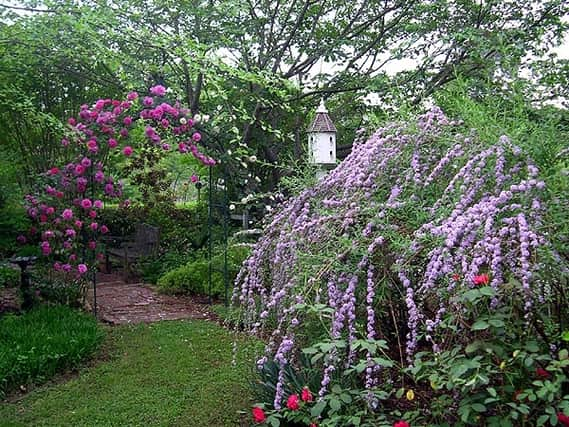Spring cleaning your garden


The first task is removing and composting any dead annual plants that remained over winter. These will not return and any self-seeders will already have done their job.
If you didn't prune back your perennials in the autumn, they're probably looking pretty ugly as spring sets in. Many perennials actually prefer to be left standing throughout the winter, for extra protection. But by definition, herbaceous perennials will die back to the ground during winter. If you did leave your perennials standing last year, once you start to see new growth at the base of the plants, it's safe to begin removing winter mulch and pruning them down to ground level.
Advertisement
Hide AdAdvertisement
Hide AdSome shrubby plants with woody stems (artemisia, buddleia, caryopteris, lavender...) need to be cut back each spring, because they only bloom on new branches. These are pruned in the spring, to limit winter damage and to encourage the plant to start sending out those new flowering branches. It's best to wait until danger of a hard frost is past. Most of these woody perennials will let you know when it's time to prune them by showing signs of opening buds on the lower stem portions or new growth at the base of the plants.
Depending on where you are gardening, some perennial plants will never quite go dormant, but they may still need tidying up. Plants like Epimedium, Hellebores, Heuchera and bearded iris retain their leaves all winter. Spring is the time to trim back the tattered foliage and encourage new growth to come in.
If you left your ornamental grasses up for winter interest, you can cut them back as soon as you can get to them. You don't need to wait for new growth. Cut grasses to within a few inches of the ground. They'll come back up when they're ready.
Spring rose care depends very much on your climate. Roses grown in warm climates, where roses never go dormant, benefit from a good pruning and the removal of he majority leaves, to shock the rose into thinking it was dormant and needs to wake up and start growing again. Where roses did go dormant, spring care should begin just as the leaf buds begin to plump up.
Advertisement
Hide AdAdvertisement
Hide AdMost spring blooming trees and shrubs set their flower buds in the summer or autumn of last year. Pruning them in the spring, before they've bloomed, would mean pruning off this year's flowers.
Most evergreens should require little to no spring care other than some tidying up. Spring is a good time to fertilize evergreens, because they are actively growing at this time. However, if the soil is healthy and rich, you should only need to feed your evergreens about every other year. Look for a well-balanced food labeled especially for evergreens.
Early spring is the time to take action against weeds with some pro-active weeding. Damp soil makes it much easier to pull young weed seedlings. Don't try to compost weeds. They'll come back to haunt you.
Most of what you clean up can go into your compost pile. It's best to start a new pile in spring and leave your old pile to flip and use. Dispose of any plant material that shows signs of disease and any seed heads, weeds or otherwise, that could become a problem.
Advertisement
Hide AdAdvertisement
Hide AdIt's always wise to test your soil before you start adding things to it. If you amended your soil in the autumn, check to see how balanced things are. Most plants enjoy a good feeding in the spring, when they're having their initial growth spurt. If you have rich, healthy soil, all you should need to do in the spring is a bit of top dressing with compost, manure or a complete slow release organic fertilizer. If you prefer using synthetic fertilizers, you can start applying it once your plants show signs of new growth.
Spring is the ideal time for dividing or transplanting. Try to do this as soon as possible after the plant emerges. It's amazing how quickly plants recover from this abuse if you catch them early, when the weather is still mild and they're raring to grow.
Mulch does many wonderful things for your garden: conserves water, cools plant roots, feeds the soil, smothers weeds... There's no question that every garden deserves a layer of mulch. Wait until the soil warms up and dries out a bit, before replenishing your mulch. Be sure to keep it away from the stems and crowns of your plants and, if you’re hoping for some self-seeding volunteers, give them a chance to germinate before you cover the bed with mulch.
The finishing touch in the spring is edging. A crisp edge makes a garden bed look polished. It also helps prevent your lawn from crawling into your flower bed. Don't underestimate the power of a clean edge.